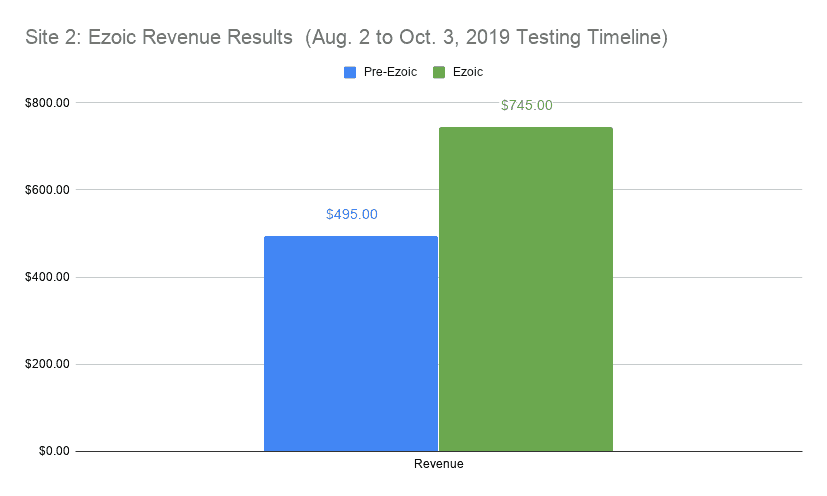
On February 20, 2018 AdSense rolled out its new Auto Ads system to all AdSense accounts.
By that date I had had tested Auto Ads for a tad over two weeks while it was in beta. I usually test AdSense offerings in beta. I wrote about AdSense Auto Ads here.
What is AdSense Auto Ads?
It’s Adense’s new system for automatically inserting their ad offerings into your content in an effort to earn more money per ad unit.
Sounds sweet, right?
I thought so, until I learned more (which I set out below).
Nevertheless, I clicked the “on” switch for Auto Ads and let ‘er run, but with a twist. I still had a few AdSense ads manually placed because they earned the most. I also use a couple other ad networks that inserts additional ads.
I wasn’t about to hand over the entire revenue fate of my site to AdSense. If AdSense wants to test some stuff in the middle of my content, be my guest.
If you’re thinking this is sounding like ad testing, you’re wrong. It’s merely AdSense jamming more ads into your content. There’s no optimization (revenue and/or user experience) going on.
That’s the big difference between Auto Ads and Ezoic.
That’s Ezoic.
What’s Ezoic you ask?
Ezoic is a robust platform where you can test pretty much every type of Ad in terms of sizes, colors, placements and networks (including AdSense) against one another.
The real value of Ezoic is that they learn from visitor behavior and allow publishers to improve different areas of their site automatically using real machine learning. This includes testing thousands of different ad types, placements, website layouts, and more.
For example: If you use both AdSense and Media.net on your site, you can test them against one another via Ezoic for the same ad location.
Now that’s just two ad networks. If you’re like me working with multiple networks, it’s nice to be able to test them all against one another, including AdSense, of course. Then, let Ezoic decide which ones and where each should for each individual website visitor.
That, in a nutshell is Ezoic. Oh yeah, they have really, really good reporting options so you can see how much each URL is earning on different devices. It’s one of their best features.
What’s the difference between Ezoic and AdSense Auto Ads?
I wanted to get to the bottom of this.
Ezoic obviously has an interest to surgically examine where AdSense Auto Ads lacks relative to Ezoic’s ad testing platform.
I contacted Ezoic to get the scoop.
Ezoic had plenty to say. In other words, they suggest Auto Ads is problematic in many ways.
Here are the problems with AdSense with Auto Ads (which Ezoic solves)
Ezoic provided me most of the details below for this analysis. I chime in when I have something to contribute based on my extensive use of both ad testing platforms.
Here’s why AdSense Auto Ads are dangerous:
A. Potential for Violations, Bans and Blocks (Ouch!)
If a publisher is using any other ad networks, ad providers, or affiliates, AdSense Auto Ads won’t detect those ad provider ad placements. This will likely throw additional Google ads in anyways — or at least won’t account for them — meaning three bad things:
- This will lead to the dilution of ad value and much lower ad rates over time see here.
- By not accounting for other ads potentially on the page, the publisher leaves themselves open to actually having their ads blocked by Chrome (via more than 30% ad density rule).
- Lastly, this means they won’t know if they are actually showing 5 ads or potentially 11, 12, 13??? This is terrible for UX and a huge flaw in the tool.
- BONUS: This can lead to Google non-compliance (Google says in the terms of service that you could get banned using Auto Adfs!!!!)
Jon’s comment: Dangerous stuff. I use ad networks in addition to Auto ads on my site. Points 2 and 4 are news to me. Actually point 4 shouldn’t be news to me, but it is.
Given I’m using 2 ad networks in addition to AdSense, points 2 and 4 have prompted me to turn Auto Ads for now. I’ll monitor revenue changes accordingly.
B. RPM vs. Session Revenue
Auto Ads uses RPMs as their core revenue optimization metric, this means that even with their very rudimentary understanding of UX, they will ultimately be trying to optimize page revenue vs. session revenue; which almost always means lower total revenue.
Jon’s comment: Ezoic is the company that got me thinking about ad revenue based on revenue per session instead of per page views. It makes way more sense to use per session because for most cost calculations, especially when buying traffic, you pay per session (i.e. click to your site) and not per page view.
Moreover, Ezoic is big on optimizing revenue in conjunction with user experience which requires using a revenue per session. In many cases, you’re better off financially optimizing for more page views per visitor than straight up revenue per page view.
C. No Control
Auto Ads are attempting to maximize the value of ads, not the amount of revenue the publisher actually earns!!!!
Auto Ads just chuck ads in wherever “there is space”. Publishers have no control over ad positions, potential placements, or how many ads will show. They are leaving it up to Google; who lists about a hundred warnings and caveats during their implementation process.
- These warnings are all about how they are still responsible for policy compliance even though they won’t be able to control the ads themselves!
- Additionally, there are no talks about what kinds of UX metrics that Auto Ads is accounting for (because it does not actually account for it in an objective or site-personalized way).
Jon’s comment: I knew going in I’d have no control. That’s why I used other ad networks and manual placements in addition to Auto ads.
With respect to too many ads, that wasn’t a concern. My content on my sites is really, really long. However, if you have shorter content, I could see how Auto Ads could crowd your site with too many ads. I think you just need to review your site and assess yourself.
D. Load Rates
They use a JS script for implementation. This leads to slower site speeds, slower ad load rates, and more. Ultimately this can affect both traffic and ad earnings.
Jon’s comment: This is actually an important point in my experience with Auto Ads. I had many instances of blank spaces on my site where Auto Ads were supposed to load, but didn’t.
E. Optimization
They are not looking at DNS level data and are not accounting for — or learning from — look-a-like visitors over time. This is how machines actually learn how to balance and manage user behavior and ad placements.
This is how you ensure UX and revenue are both improving over time. Google is basing it’s UX decisions on industry standard data that does not have much objective proof. They have not published any data on how Auto Ads affect objective user experience metrics like page views per visit or bounce rate (yet, we know they have this data)
Jon’s overall comments:
I’m glad I got into contact with Ezoic about Auto Ads. At first I loved auto ads. They were depositing incremental revenue into my pockets – $20 to $40 per day using just the in-article ads. I thought that was great.
However, Ezoic’s investigation, especially the potential for AdSense violations and Chrome ad blocker triggers made me re-think using them. In fact, I’ve turned off Auto Ads on my highest traffic site because I have other networks on it that I have no intention of removing at this time.
What should you do?
If you want to test ad placement, colors, sizes and ads from various networks, use Ezoic for that purpose.
TIP: My favorite feature of Auto Ads was the in-article ads. Turning off Auto Ads doesn’t mean you can’t use that unit. You just have to place it manually.
More: My Ezoic review (I’ve used this platform quite a bit over the years – on and off depending on which networks I’m trying out).

Jon Dykstra is a six figure niche site creator with 10+ years of experience. His willingness to openly share his wins and losses in the email newsletter he publishes has made him a go-to source of guidance and motivation for many. His popular “Niche site profits” course has helped thousands follow his footsteps in creating simple niche sites that earn big.






good knowledge
Simple Auto ads are not as great as it seems to be. I have turned off auto ads and getting much higher CPM than before. Thanks for writing 2 articles about this, and I hope it will help many Adsense users.
Nice ezoic affiliate shill article – ezoic is garbage.
My thoughts exactly. I use Ezoic and it has worked for me, but I can’t believe anything anyone writes about them…
Yeah, Ezoic Are not in the same league as Mediavine
I used ezoic and it ended up taking my webstie down lost lots of traffic and decided not to use them
Wow this is very good method, is it really better then adsense?
Thank you very much for sharing this awesome article.
Hi Yasna,
Yes, it can be. Over the years I’ve found different ad networks and types of ads perform best depending on the site. I write about many options. Take the time to test to find out what works best. Ezoic is a good way to determine a decent benchmark because of its testing software (I used Ezoic for years). From there you can try other networks or stick with them if you’re happy.
I think its the time to try ezoic and see the difference
I rather be faithfully to adsense